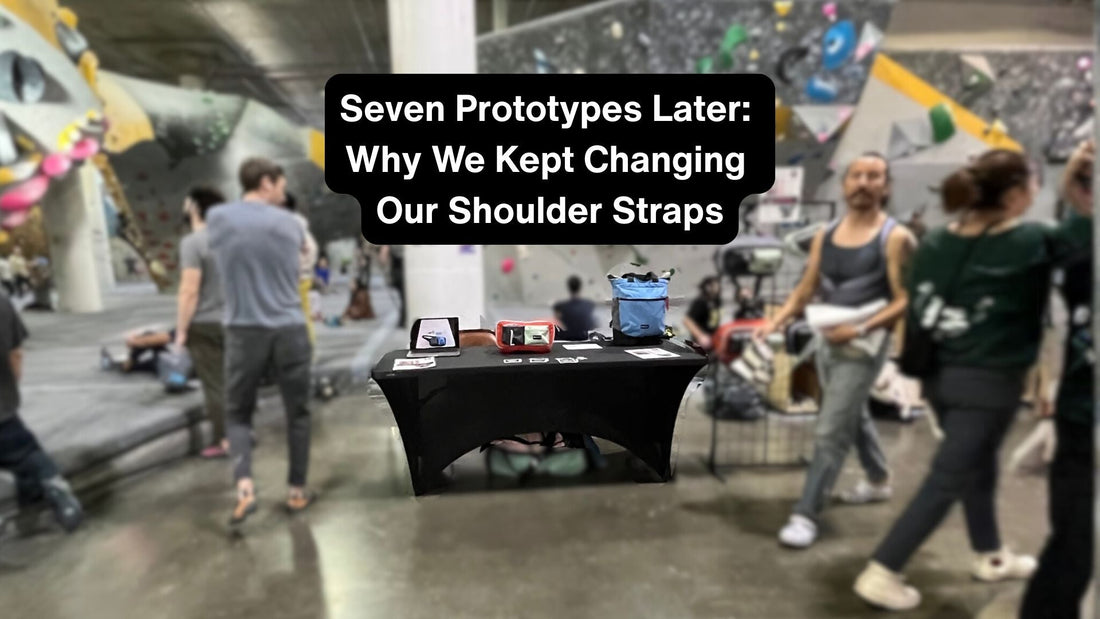
Seven Prototypes Later: Why We Kept Changing Our Shoulder Straps
Share
Somewhere between the San Francisco airport and the Dogpatch Boulders, the first totepack straps started to tear.
I'd overloaded the pack, hopping from plane to Caltrain, intending to give away stickers and show off the design. Instead, I learned what needed fixing. The straps, the stitching, but most importantly, the comfort.
This was real testing. In-person, people loved the look of the totepack. But I knew they'd only love the carrying experience if we got the straps just right.
Good design isn't guesswork. It's breaking things until they're right.
The Design Evolution
That field test kicked off what became a seven-prototype journey. We started by looking at existing solutions, trying to understand what worked and what didn't.
Our first inspiration was a Chrome bag with a really cool adjustment between tote and backpack modes. We prototyped it, and it really hurt my shoulders. Not good enough.
Next, we tried another bag design with adjustable straps and some padding, but not really enough padding. Still not what we wanted.
We explored wider straps that would give us better adjustment so the angle would sit correctly on your shoulder. Getting closer, but that still wasn't quite right.
A heavily padded strap was pretty good, but it wasn't as versatile as we needed for a climbing pack. We were looking for something that could transition seamlessly from gym to crag to everyday carry.
Finding the Right Solution
It took us two more iterations, but we finally got it. The webbing loops are exactly how we wanted them. The stabilizer strap is adjustable, but you can also clip gear onto it.
We ultimately came up with a really comfortable bag that's also light enough to actually work as a tote—not just in name, but in practice.
The Real Lesson
That breakdown between SFO and Dogpatch taught us something crucial: build, break, fix, and repeat.
Because climbers are tough on their gear, just like we're tough on our prototypes. The testing process isn't about avoiding failure—it's about finding the right failure that shows you exactly what needs to change.
Good design is testing and finding the right solution. It's taking a bag that looks great but destroys your shoulders and iterating until it's actually comfortable enough to carry all day.
Our totepacks are going to be in stock really soon. They've been through the trials, literally torn apart and rebuilt, and we think you're going to love them!
